With Korean cinemas struggling with attendance numbers that stubbornly refuse to return to anything like pre-pandemic averages, some are taking the drastic decision to rip out their screens. Instead of on-screen drama, they offer the option of on-stage drama, climbing walls and golf, as South Korea – historically a bellwether for cinema innovation - transforms traditional multiplexes into diverse entertainment venues. For once, though, some cinema operators in North America and Europe have been incorporating this change into their new venues’ DNA, while other western exhibitors are taking notice about the need to diversify.
Korea's Dramatic Cinema Transformations
Lotte Cinema's recent announcement about converting several screens at its flagship World Tower location into a second Charlotte Theatre performing arts venue signals a dramatic shift in exhibition strategy for Korea’s second biggest chain. The 459-seat venue will be carved out of existing cinema space on the building's 7th floor, joining Lotte Cinema's screens that currently occupy floors 5-11 of the Lotte World Mall Entertainment Building. While smaller than the original 1,260-seat Charlotte Theater that opened in 2006, this new performance space represents a bold KRW 45 billion (USD $34.5 million) bet on diversification.
A Lotte Cinema official told The Chosun Daily, “Our most important asset is space, and this is the result of thinking about how to utilize that space efficiently,” and added, “Movies and movie theaters are still our mainstays, but it means that we are shifting the focus of our business slightly toward performances.”
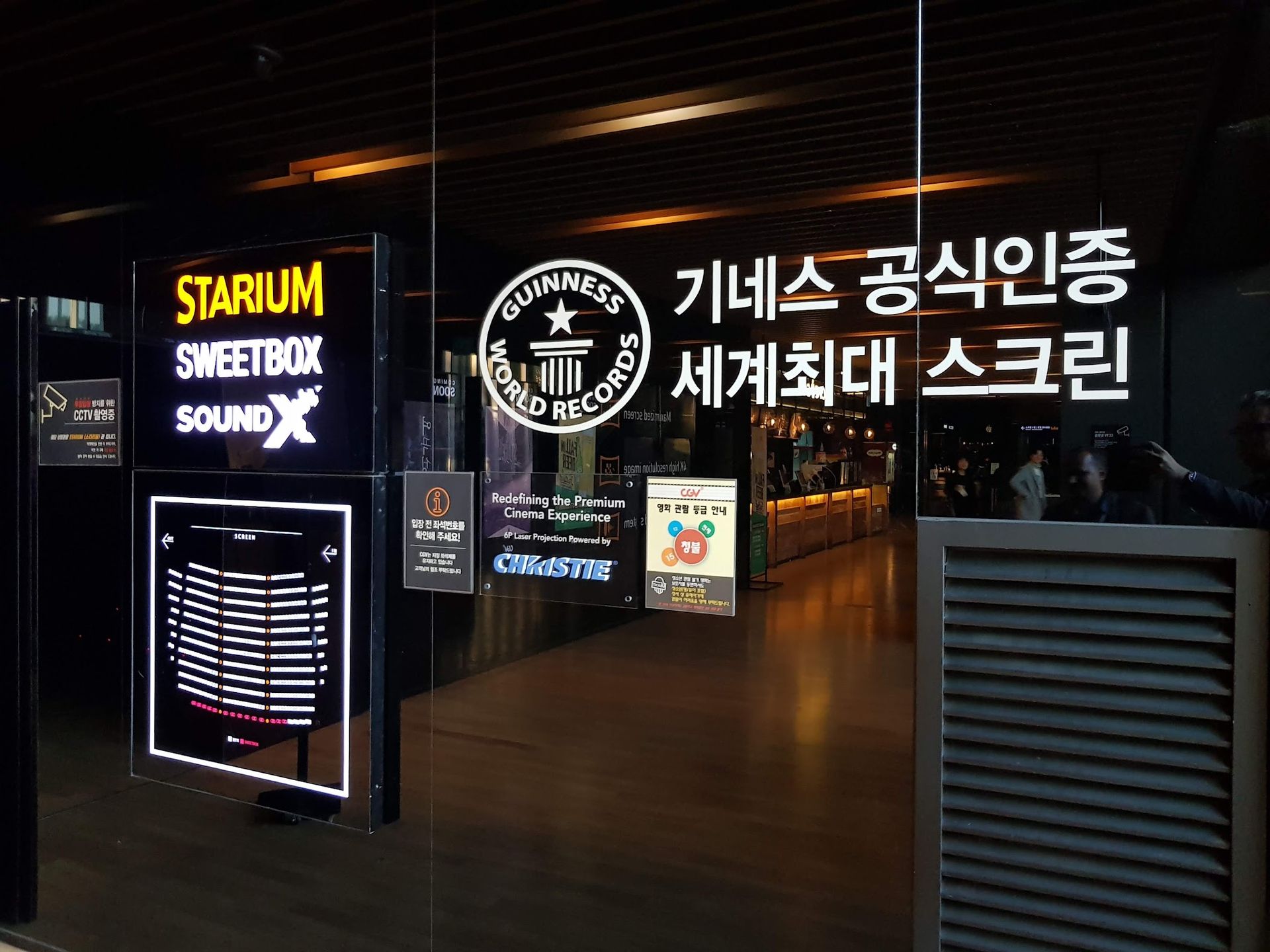
This conversion isn't happening in isolation. Lotte Cultureworks, Lotte Cinema's parent company, saw its theatre count drop from 143 to 133 last year, with the closure of venues like Daejeon Dunsan marking a strategic retreat from traditional exhibition. But what's emerging in its place might be more valuable in the long run than what's being lost. Korea once prided itself on its high-end cinema, exhibition technology innovation and award-winning films; could it now win global recognition for closing and re-purposing older screens? The answer depends on what will take their place.
The 'Live Cinema' Innovation
Take Lotte's 'Live Cinema' concept at their Hongik University location. This isn't your standard premium format upgrade – it's a complete reimagining of what a movie theatre can be. The experience transforms screening rooms into interactive spaces where audiences become part of the story. The first theme, "Friendship," turns the cinema into an elaborate escape room where teams of 3-5 people solve mysteries in converted sets including a shop, a bath house, and a cathedral.
While the KRW 240,000 (USD $185) price tag for a 100-minute experience might seem steep compared to traditional escape rooms charging KRW 20,000-30,000 per person (never mind the cost of a standard cinema ticket), demand has exceeded expectations. "We are getting such a good response from the MZ generation that weekend shows are sold out until next month. Weekday shows after 6 p.m. are also sold out," a Lotte Cinema official told Nate News. The success suggests audiences are hungry and prepared to pay good money for social experiences that go beyond passive movie watching.
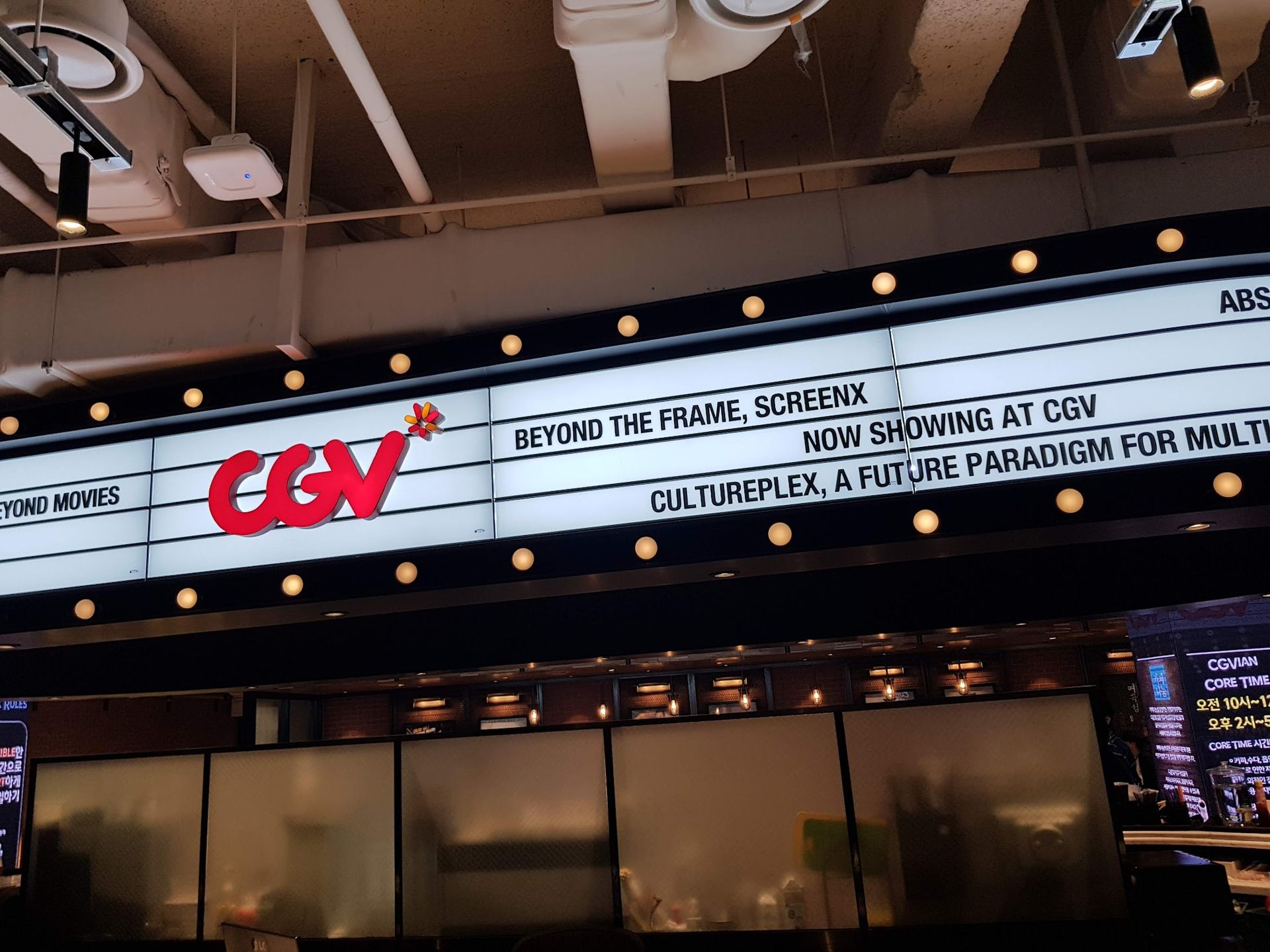
CGV's Sporting Play
Meanwhile, Lotte’s larger Korean competitor CGV has taken an even more radical approach with their 'Pickers' climbing walls. The first location, opened at Jongno Piccadilly 1958 in 2022, marked the first time a Korean multiplex had been transformed into a pure leisure facility. The success of this venture led to second and third locations in Guro and Sinchon Artreon.
CGV hasn't stopped there. Their Songpa location now features ‘The Approach,' a short game golf studio that makes clever use of cinema architecture. The 8-meter ceiling height – nearly triple the minimum 2.8-meter requirement for standard screen golf facilities – creates an expansive playing space that would be difficult to replicate in conventional shopping malls and retail locations.
"'Pickers' and The Approach' are spaces where we can maximize the advantages of screening rooms with high ceilings," explains a CGV official. The company has been strategic about targeting different demographics, with Sinchon's university district location attracting customers in their 20s, while Jongno serves post-work crowds and Guro draws a residential mix including teenagers. It also demonstrates that the success of these transformations are not lucky one-offs tied to a specific location or demographic. Just like Korean exhibitors rolled out cinema technologies such as Screen X and 4DX, so too are they now rolling out non-cinema entertainment.
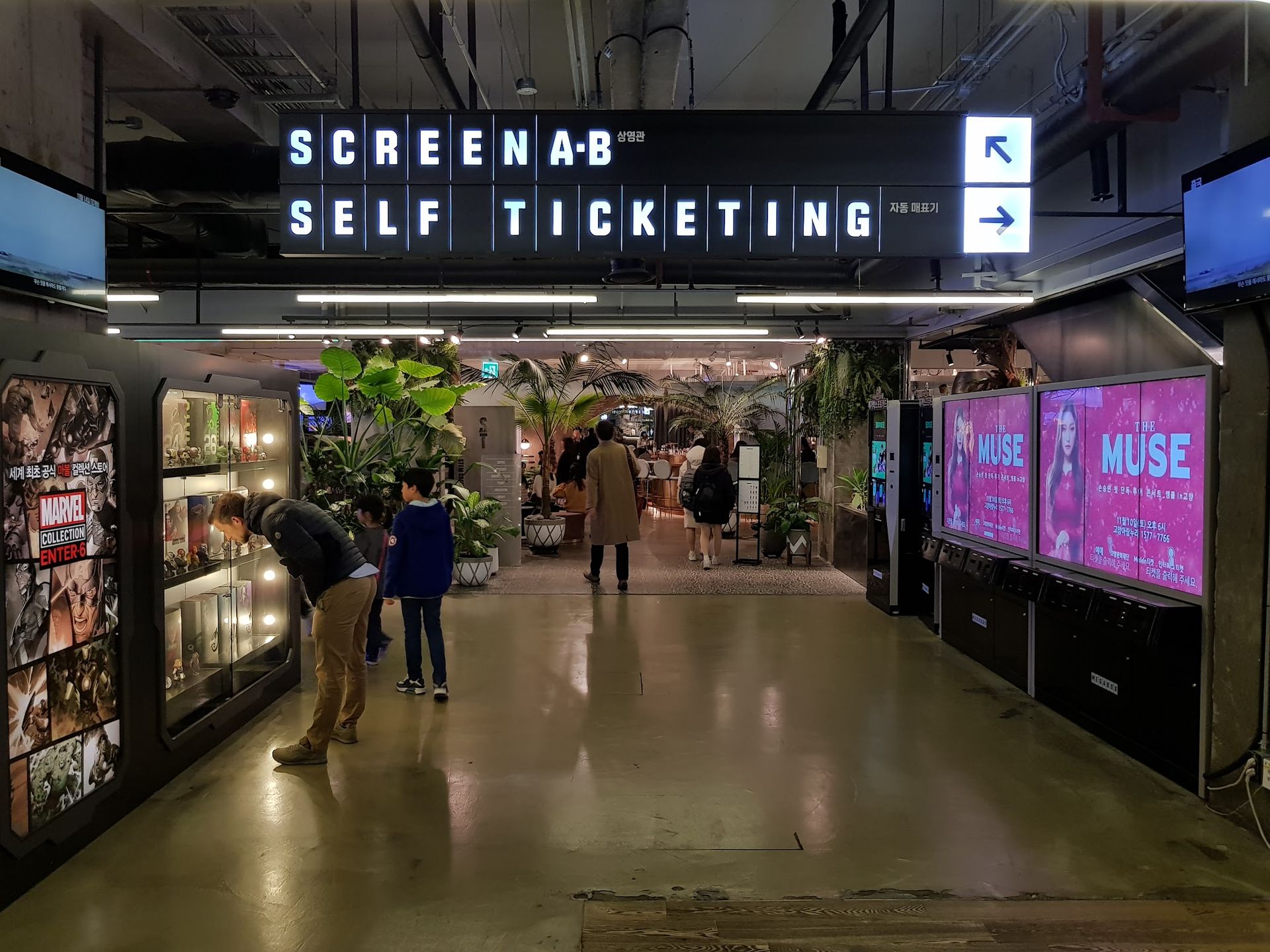
Beyond Entertainment
It's also not just about sports and games. Megabox's 'Cine Docent' program demonstrates how cinemas can serve as cultural education spaces (though in fairness France’s MK2 were first with its Cine-Philo lecture series). The art lecture series, which showcases famous galleries and art history on the big screen with expert commentary, has achieved impressive occupancy rates of up to 80%. Special lectures by celebrity guest speakers, such as one featuring actor and writer Park Shin-yang, have become particular draws.
These transformations aren't just creative exercises – they're survival strategies. The Korean film market tells a sobering story: 2024's total box office viewership of 123.12 million represents a staggering 44.8% decline from pre-pandemic 2019 levels (226.68 million). Only 14 films crossed the 2 million viewer threshold in 2024, compared to 25 in 2019. Attendance in 2024 decrease about 2 million (1.6%) from 2023 (125.14 million), while last year's total box office sales also decreased by 5.3% from 2023. While Western Cinema operators worry about recovery being too slow, Korea is seeing recovery going into reverse.
Cinemas In the West Are Already ‘Korean’
What's happening in Korea isn't occurring in isolation, with many cinema operators in Europe and North America having already embraced the diversification and even made it their guiding light. UK's The Light Cinemas has been quietly revolutionising the cinema-as-entertainment-hub concept, with their venues featuring premium bowling alleys, adventure golf, and arcade zones alongside traditional screens. As reviewer Luca wrote about The Light Redhill on Tripadvisor: “it is the perfect place to go when you need a day out. Climbing, golf, cinema, arcade, pool, darts and shuffleboard are great.” Notice that cinema was the third activity listed out of seven.
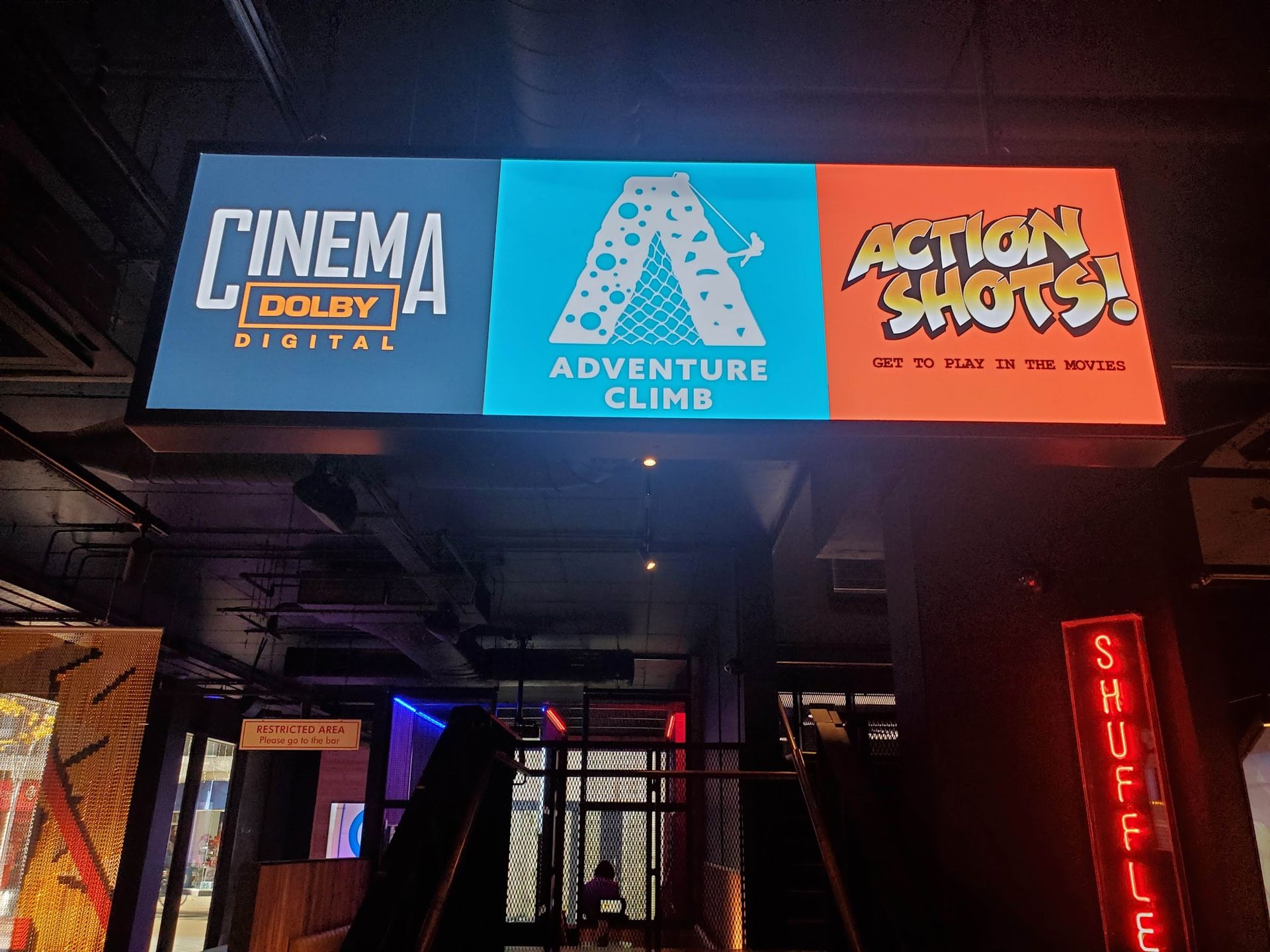
In the United States, B&B Theatres has gone all-in since many years on the entertainment destination concept. Their B&B Grand Screen format isn't just about bigger screens – it's part of a larger entertainment complex that includes Knockerball, redemption games, and upscale food and beverage options. "What we’ve done here is try and create a community hub, a place where people can come together, put their phones away, and escape,” Brittanie Bagby Baker, President and Chief Operating Officer of B&B, told Celluloid Junkie last year, highlighting the trivia nights, bingo and Uno tournaments that they hold in their Red Oak, Texas multiplex.
Performance Proves the Point
The data supports this evolution. While global box office numbers show continued recovery, the most successful cinema venues are those offering multiple entertainment options. A study by cinema trade body NATO in December 2024 noted that, “Theatrical exhibition must compete to earn the trust and loyalty of moviegoers around the world by continuing to innovate and craft special experiences for everyone who comes to the theatre,” and that the eight largest US circuits (including B&B) plan to invest over USD $2.2 billion over their next three years to upgrade their circuits.
For Korean exhibitors, meanwhile, the performance market offers particular promise as it pivots away from film dependency. While the country's film attendance struggled, performance ticket sales in the first three quarters of 2024 reached KRW 1.083 trillion, up 21.6% year-over-year. Musical ticket sales held steady at KRW 336.7 billion, while play revenues grew 13.5% to KRW 54.7 billion. With the popularity of live music, comedy and other performing arts acts across the whole world, there are opportunities for cinema operators that go beyond traditional ‘event cinema’ and programming Taylor Swift concerts on the big screen.
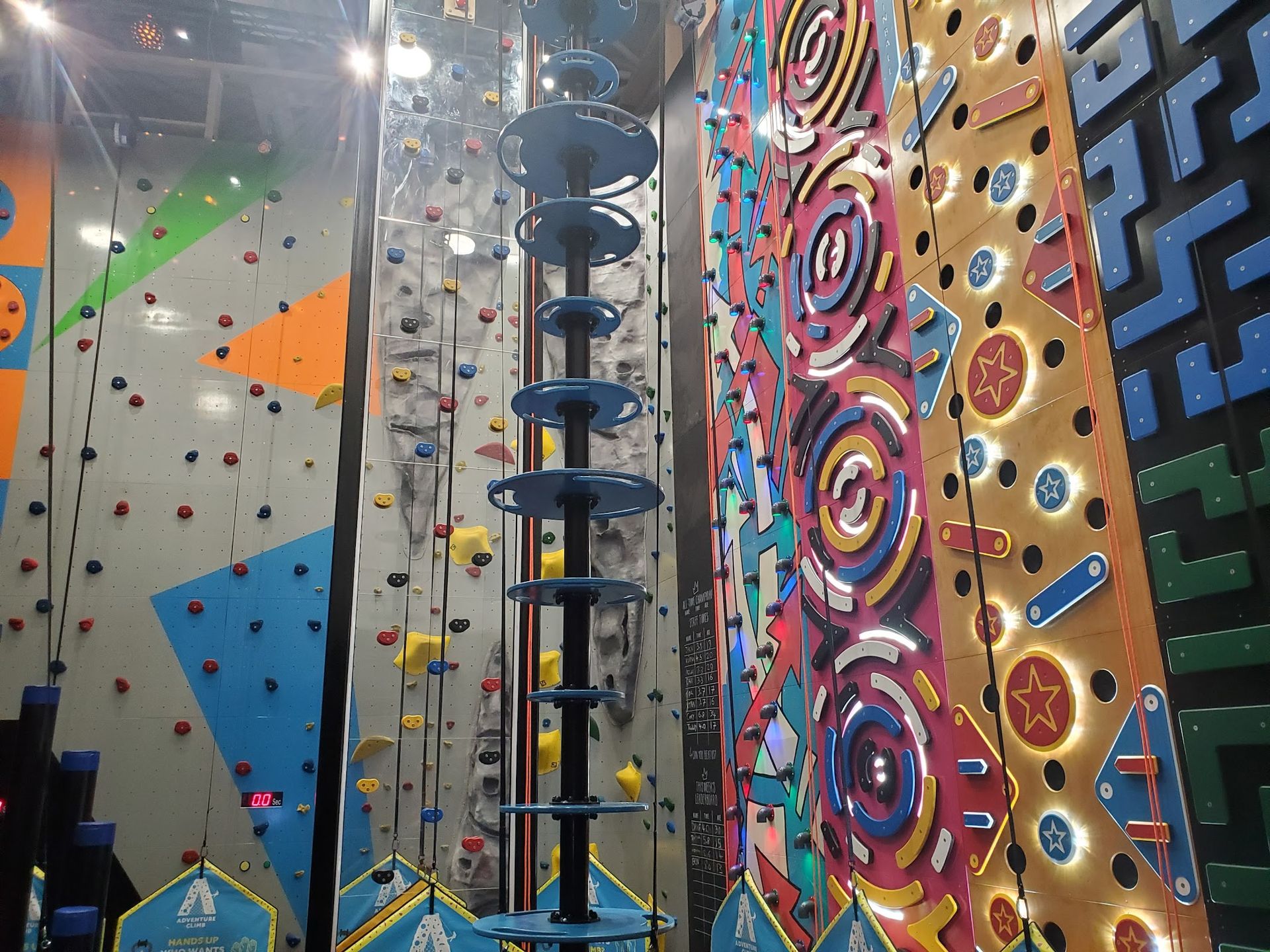
Future of the 'Cinema' Complex
While exhibitors are currently celebrating great numbers from films such as "Bridget Jones: Mad About the Boy" and “Captain America: Brave New World”, tent-poles by definition have slack between them. As such, cinemas increasingly see the sense in being the go-to entertainment destination where customers might catch that film but could also enjoy a night of bowling, gaming, or live entertainment. This is not to say that bowling will work for every cinema, even putting aside space constraints, but if B&B can have success with Game Night Tuesdays, there is no reason why for example Everyman Cinemas or Yorck Kino could not do the same – there's a good chance that high-end bingo pairs well with popcorn and a glass of Cabernet Sauvignon.
Korean exhibitors' willingness to literally tear out seats to make room for climbing walls might seem radical, but it could be exactly what the cinema industry needs. After all, Netflix can't deliver the social buzz of bowling with friends or the satisfaction of a perfectly executed mini-golf putt, plus people attending cinemas that offer such activities will be exposed to posters and trailers in the lobby that could help entice them to actually watch a film in the same cinema.
For an industry that's spent decades worrying about everything from television to VHS killing cinema, this IRL entertainment evolution might just be a key component of its long-term survival. The future of cinema isn't just about what's on the screen – it's about making the venue itself a destination, to be part of the bigger ‘experience economy’, regardless of what films are playing that week. And if that means turning screen 7 into a golf simulator or screen 12 into an escape room, well, that's just showbusiness in 2025.
Korean Cinemas Rip Out Screens to Become Entertainment Destinations